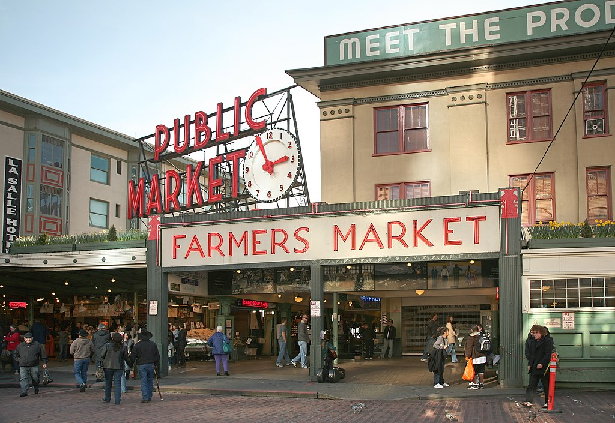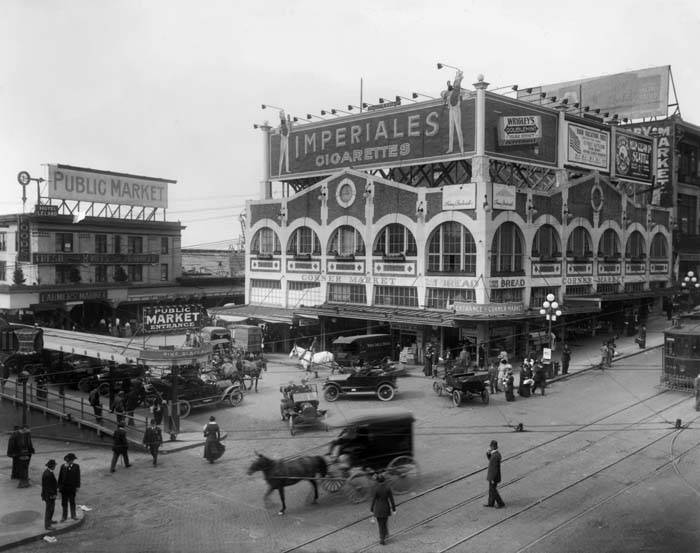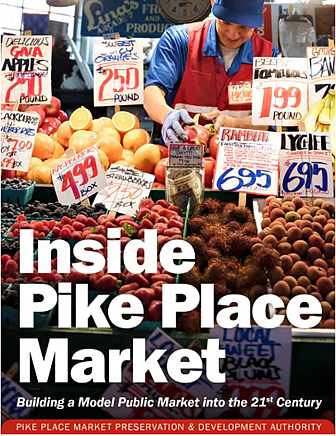Pike Place Market Turns 115!
August 15, 2022 at 6:48 p.m.
To learn the full history of the Market, download the Market’s free digital book, “Inside Pike Place Market”

The Pike Place Market turned 115 on August 17.
To celebrate, the first 115 Market shoppers had the chance to enjoy free mini donuts and hot beverages from participating Market businesses.
115 Years Ago...
From Inside Pike Place Market:
"In 1907, the price of produce in Seattle was soaring – especially the price of onions, which jumped from 10 cents a pound to a dollar. Farmers were cut out of the profits, and both the growers and customers were furious. That summer, City Councilman Thomas Revelle took up the price-gouging cause. In researching a solution, Revelle discovered a never-implemented 1896 ordinance that allowed the city to set aside land for public markets, and in July, he proposed the city cut out the commission-house middlemen by designating a public marketplace where customers could buy goods directly from farmers. Pressured by pro-market stories and editorials in Col. Alden Blethen’s Seattle Times, the City Council approved the plan for a public market in an August 5 ordinance. The city had recently constructed a ramp-like street that connected Western Avenue and the industrial waterfront – where ships and ferries delivered goods – with the northern edge of the growing business district at the foot of Pike Street. The city Department of Streets selected this newly planked open space at the top of the bluff – Pike Place, next to the Leland Hotel – as the space for the new public market.
“On August 17, a damp, cloudy Saturday morning, crowds of women shoppers seeking fresh produce and bargains descended upon Pike Place for the opening day of the market. The handful of farmers who showed up sold all their produce within minutes.
“One farmer described the scene: ‘The next time I come to this place I’m going to get police protection or put my wagon on stilts. I got rid of everything all right, but I didn’t really sell a turnip. You see, those society women stormed my wagon, crawled over the wheels and crowded me off to a respectable distance, say 20 feet. When I got back the wagon was swept as clean as a good housewife’s parlor, and there in a bushel basket was a quart of silver. Even if I didn’t have the opportunity to so much as put a price on an ear of corn, it gave me a good price for my vegetables.’ (Soul of the City, Shorett and Morgan, 14)
“By the end of the first week, dozens of wagons were gathering Monday through Saturday to sell along Pike Place.”
On the morning of the Market’s dedication: “The Market is yours. I dedicate it to you and may it prove of benefit to you and your children. It is for you to protect, defend, and uphold and it is for you to see that those who occupy it treat you fairly. … This is one of the greatest days in the history of Seattle.” – Thomas Revelle, Seattle city councilman, dedicating Pike Place Public Market on November 30, 1907
What started as a small Market has evolved into the largest continuously operating public farmers market in the U.S. with 500 small businesses, 450 residents, five social services, a Foundation and hundreds of talented crafters, farmers and performers.
While the Market is grounded by its incredible collection of diverse businesses, activities, and services, it simply would not exist without the passion and support from the citizens of Seattle. From humble beginnings to nearly being destroyed – Seattle’s citizens have brought their hearts to the “soul of Seattle.”
To learn the full history of the Market, download the Market’s free digital book, “Inside Pike Place Market,” which illustrates the Market’s continued contribution to our region’s culture and celebrates the Market’s unique characteristics and history.
 Image courtesy commonswikimedia
Image courtesy commonswikimedia





